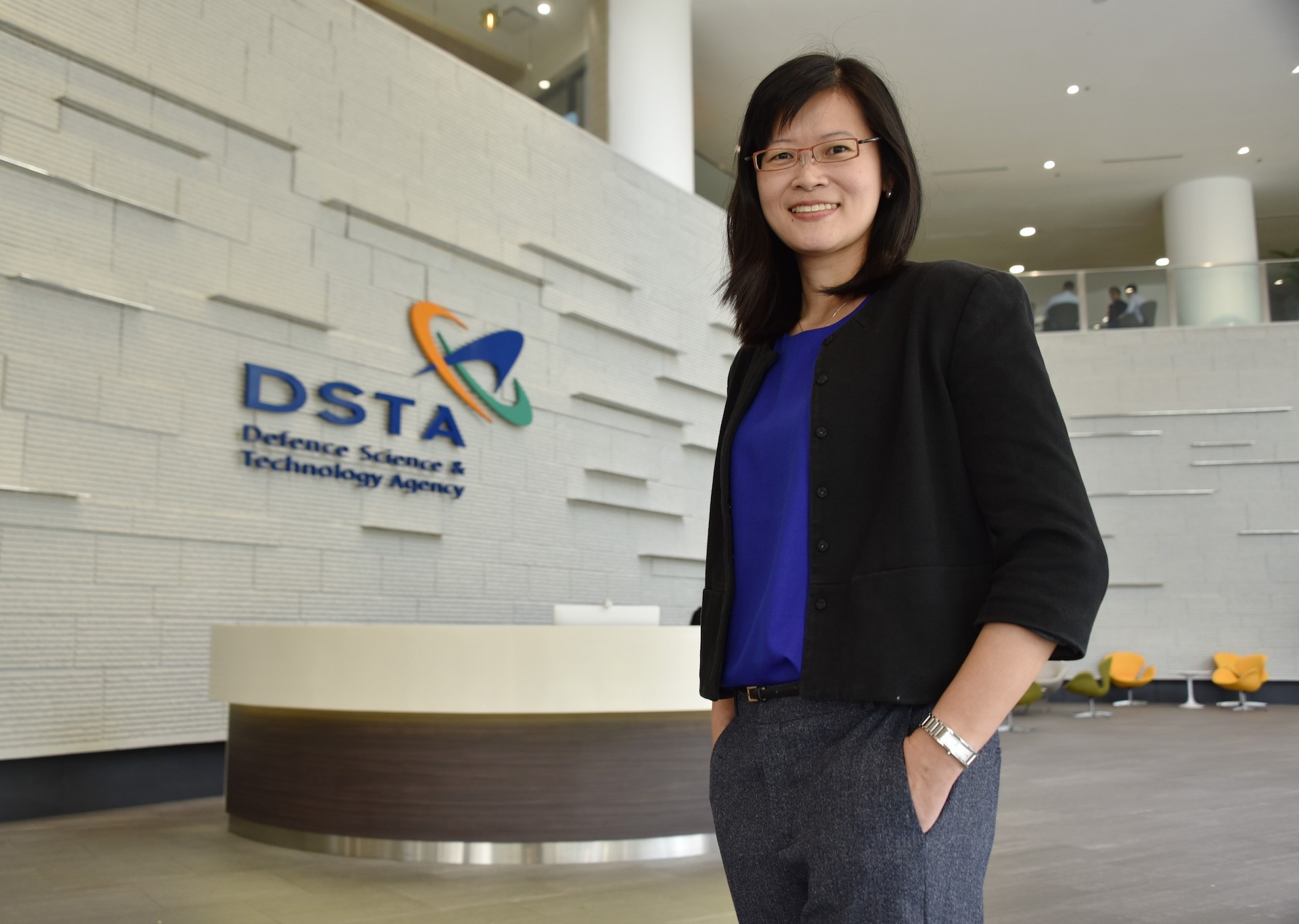SHE'S A LEADER IN SPORE'S DEFENCE TECH COMMUNITY
//STORY by Thrina Tham
//PHOTOS Courtesy of DSTA & Ngiam Le Na
"While defence and aerospace have been traditionally male-dominated, we should actively dispel the notion of a glass ceiling for women in these sectors, and make a bid for more women to join us."
These are the words of Ms Ngiam Le Na, Deputy Chief Executive (Operations) at the Defence Science and Technology Agency (DSTA).
The 44-year-old is one to speak; she leads at the forefront of defence tech in DSTA, delivering tech solutions to hone the Singapore Armed Forces' (SAF's) edge.
This year, Ms Ngiam earned a spot on the inaugural Singapore 100 Women In Tech list announced on 4 Sep.
The initiative by the Singapore Computer Society, in partnership with the Infocomm Media Development Authority, SG Women in Tech and Mediacorp, recognises women based in Singapore who have made significant contributions in the tech sector.
"Gender and physical attributes do not matter as much as knowledge, competency and experience," said Ms Ngiam, who cited examples like Marillyn Hewson and Leanne Caret - who head global security and aerospace companies Lockheed Martin and Boeing Defense Space & Security respectively - as women who have succeeded in their areas of defence tech
In DSTA, Ms Ngiam has led major acquisition, development and upgrade programmes of Singapore's military aircraft. She has also contributed to the integration of sensor and weapon systems into an air defence network to protect Singapore from aerial threats.
Most recently, she oversaw DSTA's efforts in Singapore's fight against COVID-19. These ranged from emergency procurement of medical supplies for several ministries, to developing apps for health monitoring, to building data analytics tools to aid contact tracing.
The agency also helped to develop Command and Control systems to support inter-agency task forces in managing migrant worker medical operations.
Together with local engineering companies including HOPE Technik, DSTA developed self-check temperature kiosks that have been deployed at public transport stations and interchanges.
DSTA also worked with the SAF and ST Engineering to convert SAF cross-country ambulances into mobile swab stations for faster, safer swab testing.
"Our engineers, developers and procurement specialists were very dedicated. Many put in great effort, burning weekends to deliver the outcomes. What kept them going was a strong sense of contribution towards the eventual recovery of Singapore," said Ms Ngiam of her teams' work.
Despite her many portfolios in her past 20 years at DSTA, Ms Ngiam's first project remains her most memorable one - the quest for the Republic of Singapore Air Force's (RSAF's) next fighter jet back in the early 2000s.
"As a young engineer, it was fascinating to be involved in evaluating the leading fighter jets in the world," said Ms Ngiam, who was part of the "Next Fighter Replacement Programme" team that eventually selected the F-15SG fighter jet for the RSAF.
"I vividly remember the heavy responsibility and strong sense of duty, knowing that we had to select the best fighter jet that would offer the RSAF a leading edge for the next 30 years... DSTA's professional execution of the programme became widely touted...(and it) demonstrated our stringent and transparent evaluation process."
She added that the project, which involved members from DSTA, DSO National Laboratories and the RSAF, taught her the importance of collaborative teamwork.
"Today, (this) remains highly critical in our work, especially as our defence systems are increasingly complex and highly connected."
Ms Ngiam's own start in the field of engineering came as no surprise – her father was the Head of Department for Science in a primary school and his three daughters all became engineers.
"(Growing up,) our father would pique our interest in maths and science through simple games and observations we come across in our everyday life," said Ms Ngiam.
For example, the girls learnt to build their own light bulb circuits using wires and switches. They soon grew to enjoy problem-solving. "Taking up an engineering career was a most natural choice!"
Though the intake of women in STEM (science, technology, engineering, and mathematics) has increased in recent years, Ms Ngiam admits that it is still far fewer than that of men.
It is the community's responsibility to encourage more people to take up STEM, and to allay the misinformation of women being placed in slower-moving trajectories, she added.
"In my years in DSTA, I have seen many outstanding ladies working in technology. Women bring diversity to the STEM community, along with different viewpoints and perspectives to the engineering world of hard logic.
"Technology is no longer about hardcore science...(but) requires a good understanding of the end-to-end user journey. Men and women have different perspectives in understanding the user's needs. In designing a user-centric product, we need a good mix in STEM."










